The Baggie Method of Seed Germination
The baggie method for germinating seeds can be a very rewarding experience. It is very useful if you are planning on growing palm trees from seed, cycads from seeds or any number of other species. Very fine seed is best avoided with this method as small seed often requires light for germination. Small or fine seeds also produce correspondingly small seedlings which are too delicate to be manhandled at such an early stage in their development.
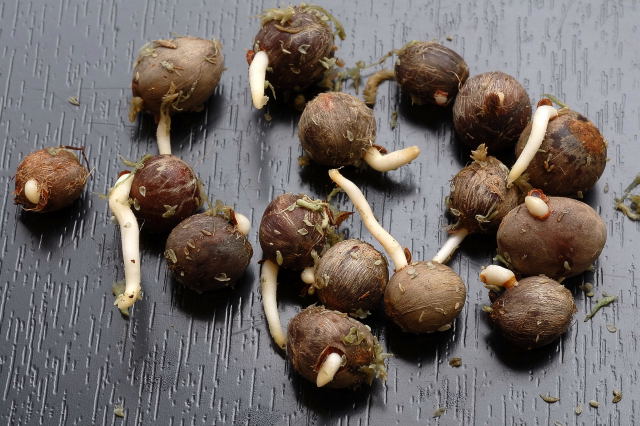
Advantages of the Baggie Method of Seed Germination
- Takes up very little space indoors.
- Can speed up the germination process.
- Can increase germination rates.
- Gives you something to do during the winter.
- It's easy.
Germination equipment
- Ziploc bags
- Sphagnum moss or vermiculite
- A warm room
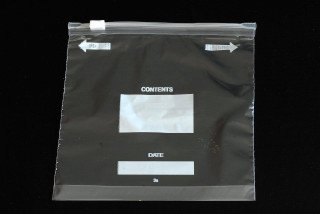
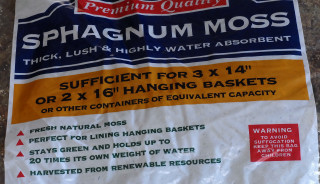
The Baggie Method
Regardless of whether you are using sphagnum moss or vermiculite, step one is to soak your seeds.
For most seeds including palm tree seed, 24 hours is sufficient. Cycad seeds benefit from a longer soak of 5 -7 days.
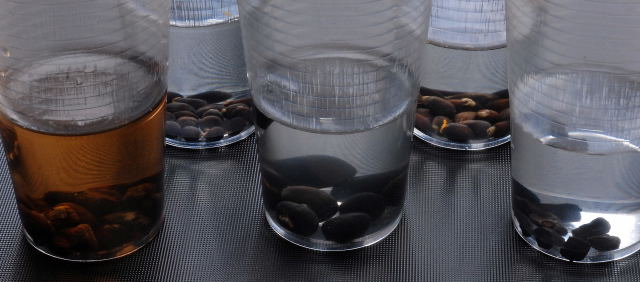
Using Sphagnum moss
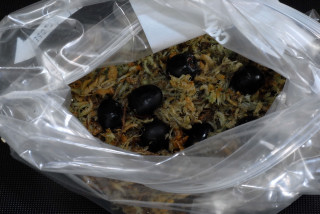
- Take a ziploc bag and label it.
- Take a good handful of sphagnum moss and whilst holding it, run it under a cold tap until it is nice and wet.
- Turn off the tap.
- Squeeze the moss until no more than a few drops remain.
- Put the moss into a ziploc bag.
- Add your pre-soaked seeds.
- Zip the bag shut expelling most of the air.
Using Vermiculite
- Take a ziploc bag and label it.
- Moisten your vermiculite.
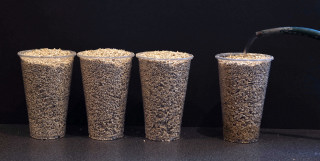
Opinion varies as to how much water should be added to the vermiculite. Some suggest as little as one teaspoon of water per litre rising up to a 50:50 mix of dry to wet vermiculite. Although seeds will germinate in the very dry mix, if you don't catch your seeds as they germinate, there is a risk that the drier vermiculite will suck the living daylights out of your newly emerging root/radical.
The 50:50 mix is also successful but the vermiculite tends to stick to the seeds and is less pleasant to work with.
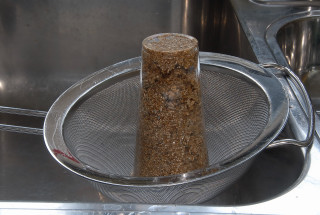
A happy medium is 3 parts dry vermiculite : 1 part wet vermiculite.
- Using a mug or plastic cup, place three scoops of dry vermiculite in a bowl.
- Refill the cup with vermiculite and fill it with cooled boiled water and allow it to stand for a few minutes. (It is probably alright to use ordinary tap water but what have you got to lose by boiling the kettle).
- Drain the vermiculite of all the excess water by placing the cup upside down in a seive. Tip the container from side to side to ensure you have removed all the water.
- Add the wet vermiculite to the bowl of dry vermiculite and stir thoroughly. The mixture should feel barely moist.
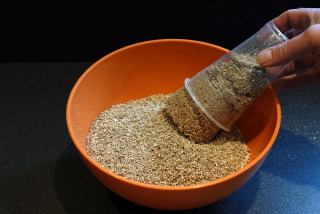
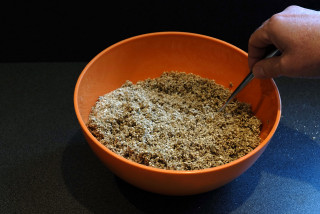
- Scoop out a mugful of the mixture and add it to your pre-labelled ziploc bag. A mugful of vermiculite (about ½ a pint or 250 cc) is enough for your average packet of 10 -20 seeds. If the seeds are very large use a little extra.
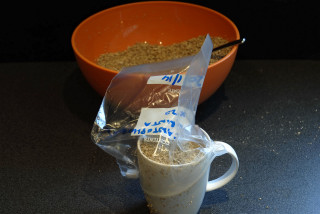
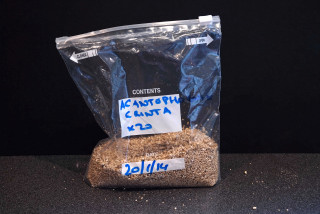
- Ideally chose a mug that will allow the ziploc bag to fit over the top. This will considerably reduce any mess you make.
- Add your pre-soaked seeds.
- Zip the bag shut expelling most of the air.
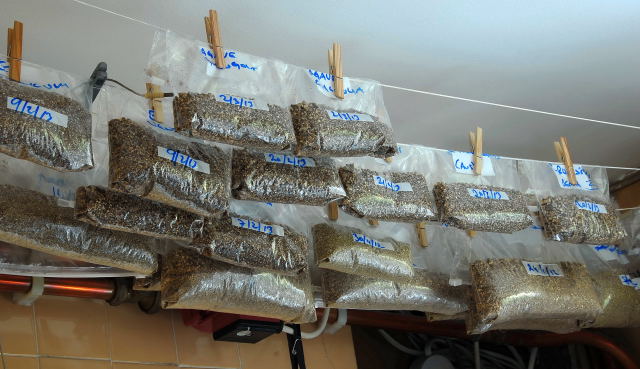
Once the bags are sealed they need to be placed somewhere consistently warm. This could be within an airing cupboard or boiler room. In the example shown above the bags are suspended from a clothes line attached near the ceiling of the utility room next to some exposed pipework. This room also contains the boiler.
During milder weather the temperature at this point fluctuates between 25ºC - 33ºC (77ºF - 91.4ºF)
When the weather gets really cold outside the temperature range increased to between 29ºC - 35.6ºC (84ºF - 96ºF)
The majority of seeds suited to the baggie method take at least a couple of weeks to germinate. (Seeds that germinate overnight hardly warrant the effort of setting up a baggie system. These seeds are best planted in the conventional manner). After two weeks begin checking the bags every couple of days. As the seeds begin to germinate remove them from the bags and pot them up individually. Any seeds that do germinate within the first two weeks are unlikely to come to any harm left in the bag for a few days if you don't catch them exactly on the day they germinate.
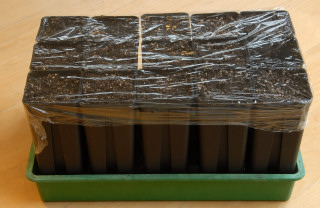
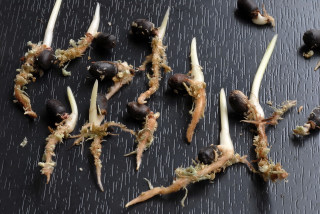
It is handy to have a number of pots (filled and sterilised) at the ready (Fill the pots with compost and pour boiling water onto them). (The clingfilm cover prevents the compost from drying out). This allows you to immediately pot up any germinated seeds as and when you find them.
The best time of year to experiment with the baggie method of seed germination is any time after the dust has settled in the New Year. Chances are that it will be cold outside and the central heating will be on for the next couple of months or so. Some seeds require several months to germinate and having the heating on during this time is beneficial.
Some palm seeds and cycad seeds germinate relatively quickly. However they often spend a considerable time doing whatever it is they do underground before sending up a shoot. So even if they germinate sometime in January, chances are there will be plenty of light around before the first leaf emerges.
One attempt at the baggie method was tried by suspending ziploc bags in the eves of the greenhouse during the spring/summer months. The bags were covered with a sheet of Hessian to protect them from any direct sun. In spite of that, temperatures within the bags rose to 45ºC (113ºF), nothing germinated and that whole ugly chapter was never mentioned again (until now that is).
Results
Click here for a table with results.

